Whether dinosaurs could swim has fascinated paleontologists and dinosaur enthusiasts for generations. While we often picture dinosaurs roaming across prehistoric landscapes, the possibility that these remarkable creatures might have been capable of aquatic locomotion adds another dimension to our understanding of their lives. Recent fossil discoveries and advanced research techniques have provided compelling evidence that many dinosaur species could swim, though with varying degrees of proficiency. This article explores what the fossil record tells us about dinosaur swimming abilities, examining the anatomical features, fossil trackways, and environmental contexts that help scientists reconstruct this aspect of dinosaur behavior.
The Evolutionary Context of Swimming in Dinosaurs
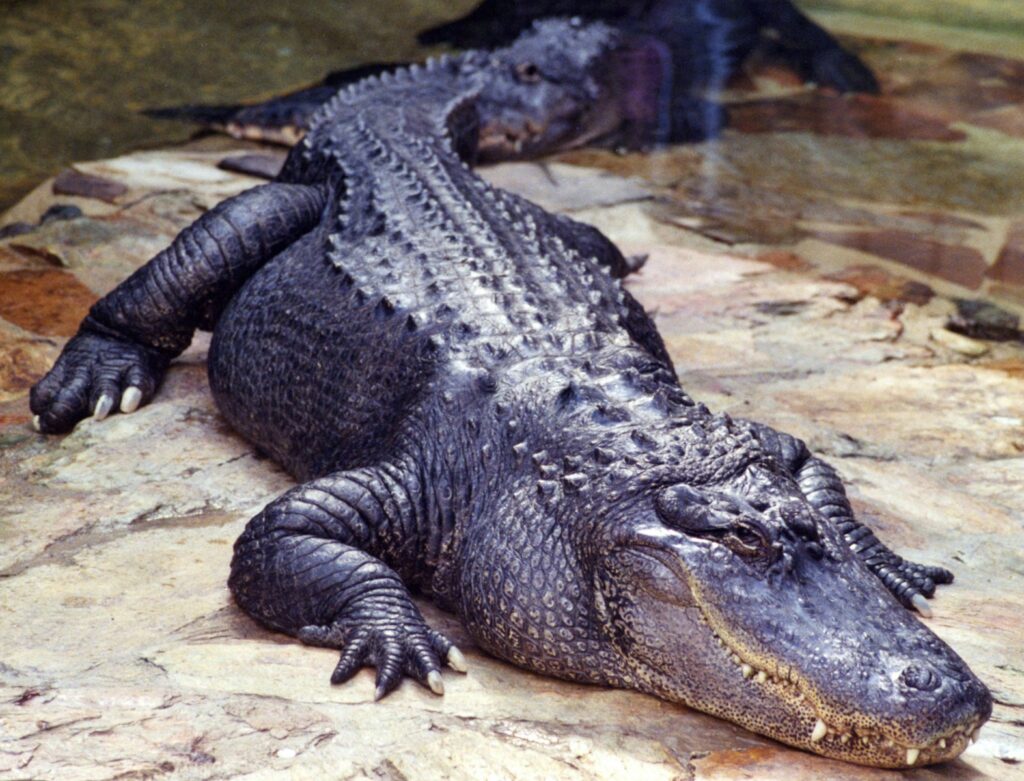
To understand dinosaur swimming capabilities, we must first consider their evolutionary heritage. Dinosaurs evolved from archosaurian reptiles around 230 million years ago during the Triassic period. Their ancestors lived in environments where water navigation would have been advantageous, if not essential, for survival. Modern descendants of the archosaur lineage—birds and crocodilians—are both capable swimmers, suggesting this ability might have deep evolutionary roots. Crocodilians, in particular, represent a sister group to dinosaurs and are superbly adapted to aquatic environments with their powerful tails and streamlined bodies. This evolutionary context provides important background for evaluating the swimming potential of various dinosaur species, suggesting that the basic biological framework for swimming may have been present in many dinosaur lineages.
Anatomical Evidence for Swimming Capabilities
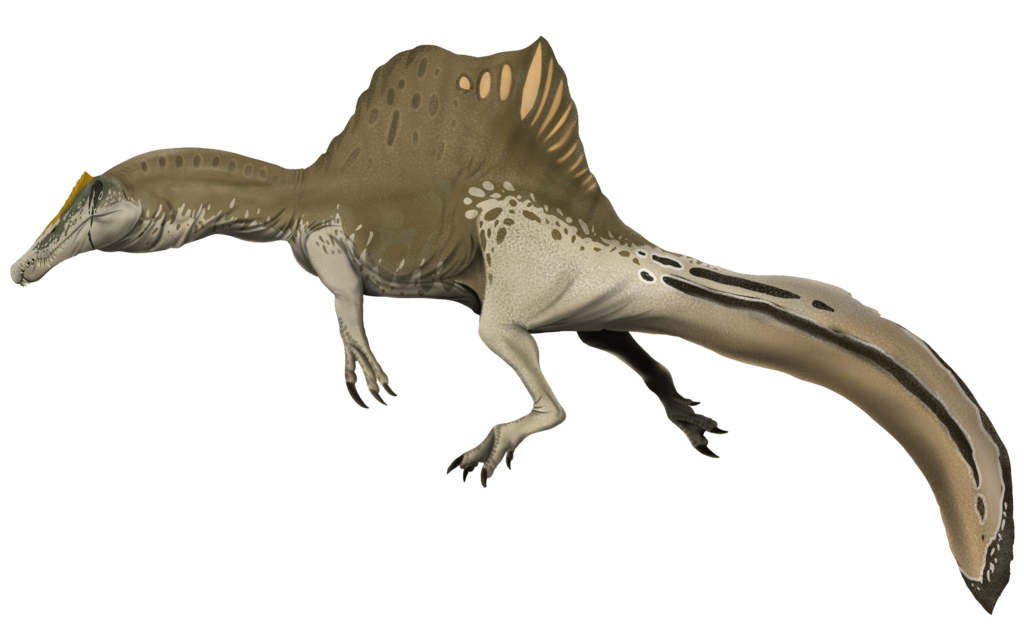
Fossil evidence reveals certain anatomical features in some dinosaur species that would have facilitated swimming. Spinosaurus, for example, possessed dense bones that would have provided buoyancy control—a feature commonly found in aquatic animals. Some theropods had long, powerful tails that could have generated thrust through water, similar to how crocodiles swim. Additionally, certain dinosaur species had forelimbs that appear to have been adapted for paddling motions. The orientation and articulation of limb joints in some specimens suggest movements compatible with swimming. These anatomical features vary significantly across dinosaur groups, indicating different degrees of aquatic adaptation rather than a uniform swimming capability across all dinosaurs.
The Spinosaurus Revolution: A Dinosaur Built for Water

Perhaps the most compelling case for a swimming dinosaur comes from Spinosaurus aegyptiacus, a massive theropod that lived approximately 97 million years ago in North Africa. Recent fossil discoveries have dramatically altered our understanding of this creature, revealing adaptations strongly suggesting an aquatic lifestyle. Spinosaurus possessed a tall sail-like structure on its back, dense bones that would have provided ballast, and a long, crocodile-like snout suited for catching fish. Most significantly, it had a paddle-like tail structure unlike any other known dinosaur, which would have been an effective propulsion mechanism in water. Computer modeling of this tail structure indicates it could generate significant thrust for swimming, making Spinosaurus the first known truly semi-aquatic dinosaur. This revolutionary understanding has fundamentally changed how paleontologists view the potential diversity of dinosaur lifestyles.
Fossil Trackways: Footprints in Water

Beyond skeletal remains, fossil trackways provide direct evidence of dinosaur behavior, including interactions with water. Several notable sites worldwide preserve dinosaur footprints that appear to have been made while the animals were swimming. One famous example comes from the Cameros Basin in Spain, where elongated claw marks suggest that theropod dinosaurs were touching the bottom of a water body while partially buoyant. Similar swimming traces have been discovered in Wyoming and China. These trackways often show only claw marks rather than full footprints, indicating the dinosaur was partially floating, with only its feet occasionally making contact with the substrate. The consistent pattern of these traces across multiple species and locations strongly suggests that swimming was not uncommon behavior among certain dinosaur groups.
Environmental Context and Habitat Clues

The environmental settings in which dinosaur fossils are found provide important context for inferring swimming behavior. Many dinosaur remains have been recovered from ancient river systems, lake beds, and coastal deposits, suggesting these animals frequently lived near water. The Cretaceous-era Kem Kem beds of Morocco, where Spinosaurus fossils have been found, represent an ancient river system teeming with large fish—ideal hunting grounds for a semi-aquatic predator. Similarly, fossils of the duck-billed hadrosaurs are frequently found in sediments suggesting marshy or riparian habitats. This environmental context, combined with anatomical features, helps paleontologists reconstruct the ecological niches these dinosaurs occupied. In many cases, the evidence suggests dinosaurs that lived near water bodies would have benefited from swimming abilities, whether for food acquisition, escape from predators, or migration.
Duck-Billed Dinosaurs: Built for Both Land and Water?
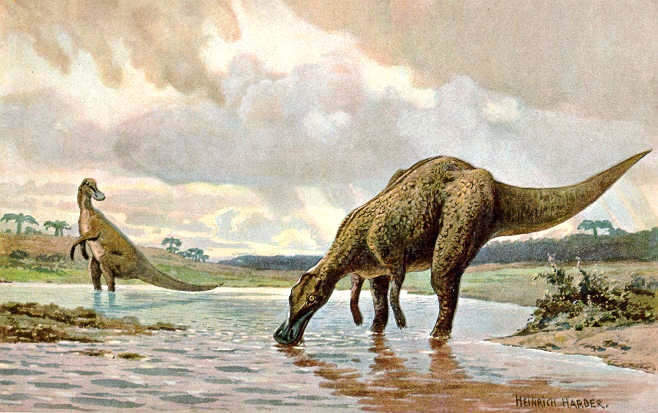
Hadrosaurs, commonly known as duck-billed dinosaurs, have long been suspected of having swimming capabilities based on their skeletal structure and the environments they inhabited. These ornithopods had powerful hind limbs that could have provided propulsion in water, while their tails were tall and laterally compressed—potentially useful for swimming. Modern reconstructions suggest that hadrosaurs were well-equipped for movement through both terrestrial and aquatic environments. Fossil evidence from multiple locations shows hadrosaur remains in sediments indicative of ancient rivers and coastlines. Furthermore, the broad, flattened “duck bill” may have been used for foraging in shallow water environments, similar to modern waterfowl. While not as specialized for aquatic life as Spinosaurus, hadrosaurs represent a group that likely had moderate swimming abilities that complemented their primarily terrestrial lifestyle.
Sauropods: Could the Giants Swim?
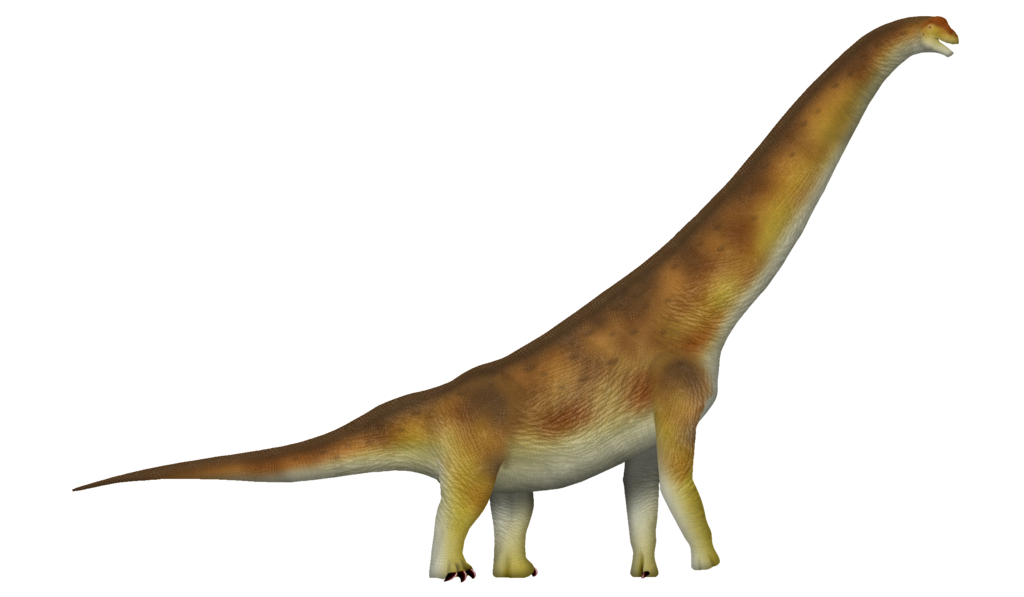
The question of whether the largest dinosaurs—the long-necked sauropods—could swim has particularly captured the scientific and public imagination. These colossal animals, some weighing over 50 tons, present an interesting case study. Computer models suggest that sauropods would have been buoyant in deep water due to air sacs in their bodies, similar to those found in modern birds. Trackway evidence from Wyoming appears to show sauropod trails crossing ancient river channels, suggesting these giants could navigate water bodies when necessary. The pneumaticity (air-filled cavities) in sauropod bones would have increased their buoyancy, potentially making swimming less energy-intensive than might be expected for animals of their size. While sauropods were primarily terrestrial creatures, the evidence suggests they were capable of swimming across water bodies during migrations or when escaping predators, though they likely avoided deep water when possible.
Theropod Swimmers: Predators in the Water
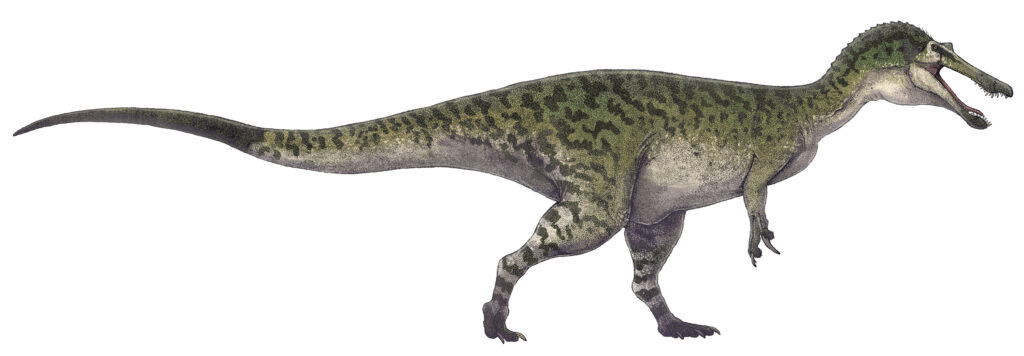
Predatory theropod dinosaurs show varied adaptations that might relate to swimming abilities. Beyond the extreme case of Spinosaurus, other theropods like Baryonyx and Suchomimus had crocodile-like snouts and conical teeth well-suited for catching fish. These adaptations suggest these animals spent considerable time in or near water, hunting aquatic prey. The forelimbs of some theropods were powerful and may have been useful for paddling, while their strong tails could have provided propulsion. Fossil evidence of stomach contents from some theropods includes fish remains, further supporting the hypothesis that these dinosaurs hunted in water at least occasionally. While most theropods were not specialized swimmers, many likely possessed basic swimming abilities that expanded their hunting opportunities and helped them exploit aquatic resources in their environments.
Comparing Dinosaurs to Modern Animals

Comparing dinosaurs to their living relatives and ecological equivalents helps contextualize their potential swimming abilities. Modern birds, the direct descendants of theropod dinosaurs, display various levels of swimming proficiency—from the specialized adaptations of penguins to the basic swimming capabilities of many land birds when necessary. Similarly, large terrestrial mammals like elephants and rhinoceroses can swim effectively despite their size and primarily terrestrial lifestyles. Crocodilians, as mentioned earlier, represent another useful comparison as relatives of dinosaurs that excellently adapted to aquatic environments. These modern analogues suggest that basic swimming capability is widespread among large terrestrial vertebrates, making it plausible that many dinosaurs possessed at least rudimentary swimming abilities. The diversity of swimming adaptations seen in living animals also helps paleontologists interpret the range of swimming proficiencies that likely existed among different dinosaur groups.
The Physics of Dinosaur Swimming

Understanding the biomechanics of dinosaur swimming requires consideration of fundamental physical principles. Body density, buoyancy, and propulsion mechanisms all influenced how effectively different dinosaurs could move through water. Computer simulations suggest most dinosaurs would have been naturally buoyant due to air sacs in their respiratory systems—a feature inherited from their ancestors and still present in birds today. The long tails of many dinosaurs would have provided effective propulsion through side-to-side undulation, similar to how crocodiles swim. Limb structure also played a crucial role—paddling with limbs would have been more effective in some species than others based on limb length, musculature, and joint flexibility. These physical considerations help scientists determine which dinosaur species were likely capable swimmers and which were more limited to terrestrial environments. The physics of dinosaur swimming represents an area where paleontology intersects with biomechanics to recreate prehistoric behaviors.
Dinosaur Swimming Across the Mesozoic Era

The swimming capabilities of dinosaurs likely evolved throughout the Mesozoic Era as different lineages adapted to changing environments and ecological niches. Early dinosaurs from the Triassic period show fewer aquatic adaptations compared to some later forms. By the Jurassic period, certain groups like spinosaurids began developing features suggesting increased interaction with aquatic environments. The Cretaceous period saw the emergence of highly specialized forms like Spinosaurus with clear aquatic adaptations. This evolutionary progression wasn’t universal across all dinosaur groups—some lineages remained predominantly terrestrial throughout their existence. The varying degrees of swimming adaptation across dinosaur groups and through time reflect the incredible diversity of ecological niches these animals occupied during their 165-million-year reign. This evolutionary pattern demonstrates how dinosaurs continuously adapted to exploit different resources and habitats, including aquatic environments.
Geographic Distribution and Water Barriers

The global distribution of dinosaur fossils provides indirect evidence of their swimming capabilities, as water barriers would have influenced dinosaur dispersal. During the Mesozoic Era, the continents were configured differently than they are today, with various seaways and straits separating landmasses. Some dinosaur groups managed to achieve nearly worldwide distributions despite these water barriers, suggesting they could cross at least narrow water bodies. Evidence of closely related dinosaur species on landmasses separated by shallow seas indicates either land bridge crossings during periods of low sea levels or swimming across water gaps. For example, similar hadrosaur species found in North America and Asia suggest these animals could traverse the narrow Bering Strait that existed during certain periods. The biogeographical patterns of dinosaur distribution thus provide another line of evidence supporting swimming abilities in at least some dinosaur groups.
Future Research Directions

The study of dinosaur swimming capabilities continues to evolve as new fossils are discovered and advanced technologies permit more sophisticated analyses. Future research will likely focus on detailed biomechanical modeling using computational fluid dynamics to better understand how different dinosaur body shapes would have performed in water. Soft tissue reconstruction through comparative anatomy with living relatives may help paleontologists better understand muscle arrangements that would have facilitated swimming. Additionally, a microscopic examination of bone structure can reveal density patterns that might indicate adaptation to aquatic environments. New fossil discoveries, particularly from river and lake deposits, may provide more direct evidence of swimming behavior. The application of isotope analysis to fossil bones and teeth can also reveal information about habitat use, potentially identifying dinosaurs that spent significant time in aquatic environments. These multidisciplinary approaches promise to further refine our understanding of dinosaur swimming in the coming years.
Conclusion: Dinosaurs as Versatile Swimmers

The fossil record strongly suggests that many dinosaurs could swim, though with varying degrees of proficiency, reflecting their diverse ecological adaptations. From the highly specialized Spinosaurus with its paddle-like tail to the more general swimming capabilities likely possessed by hadrosaurs and many theropods, dinosaurs demonstrated remarkable versatility in exploiting both terrestrial and aquatic environments. Even the massive sauropods appear to have been capable of navigating water when necessary. This emerging picture of dinosaurs as swimmers adds nuance to our understanding of these animals, moving beyond the traditional view of dinosaurs as purely terrestrial creatures. Rather than a simple yes or no answer to whether dinosaurs could swim, the evidence reveals a spectrum of swimming abilities across different groups, reflecting the incredible diversity of these animals that dominated Earth’s ecosystems for over 160 million years. As research continues, our understanding of dinosaur swimming behavior will undoubtedly become even more refined, further illuminating this fascinating aspect of prehistoric life.




